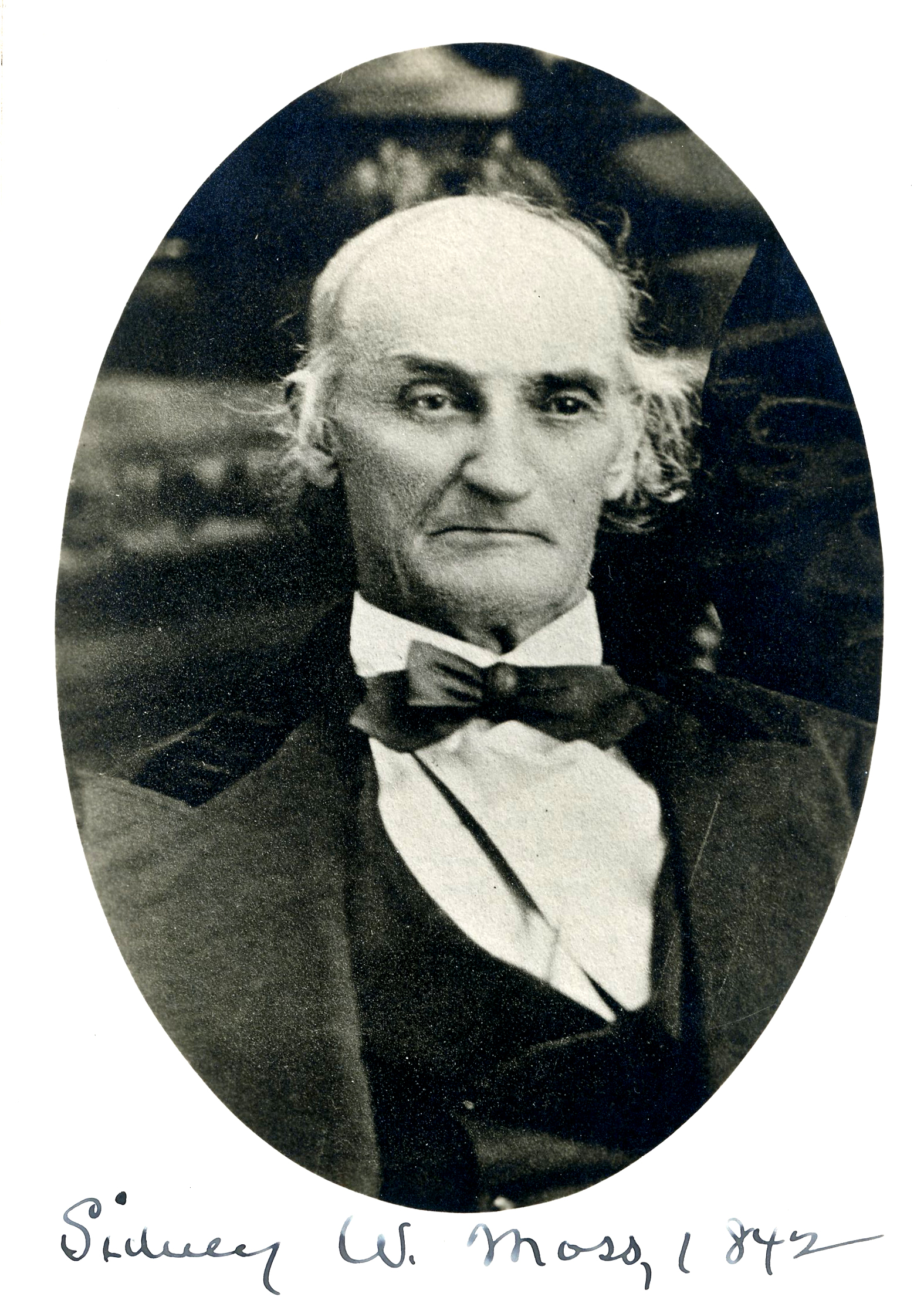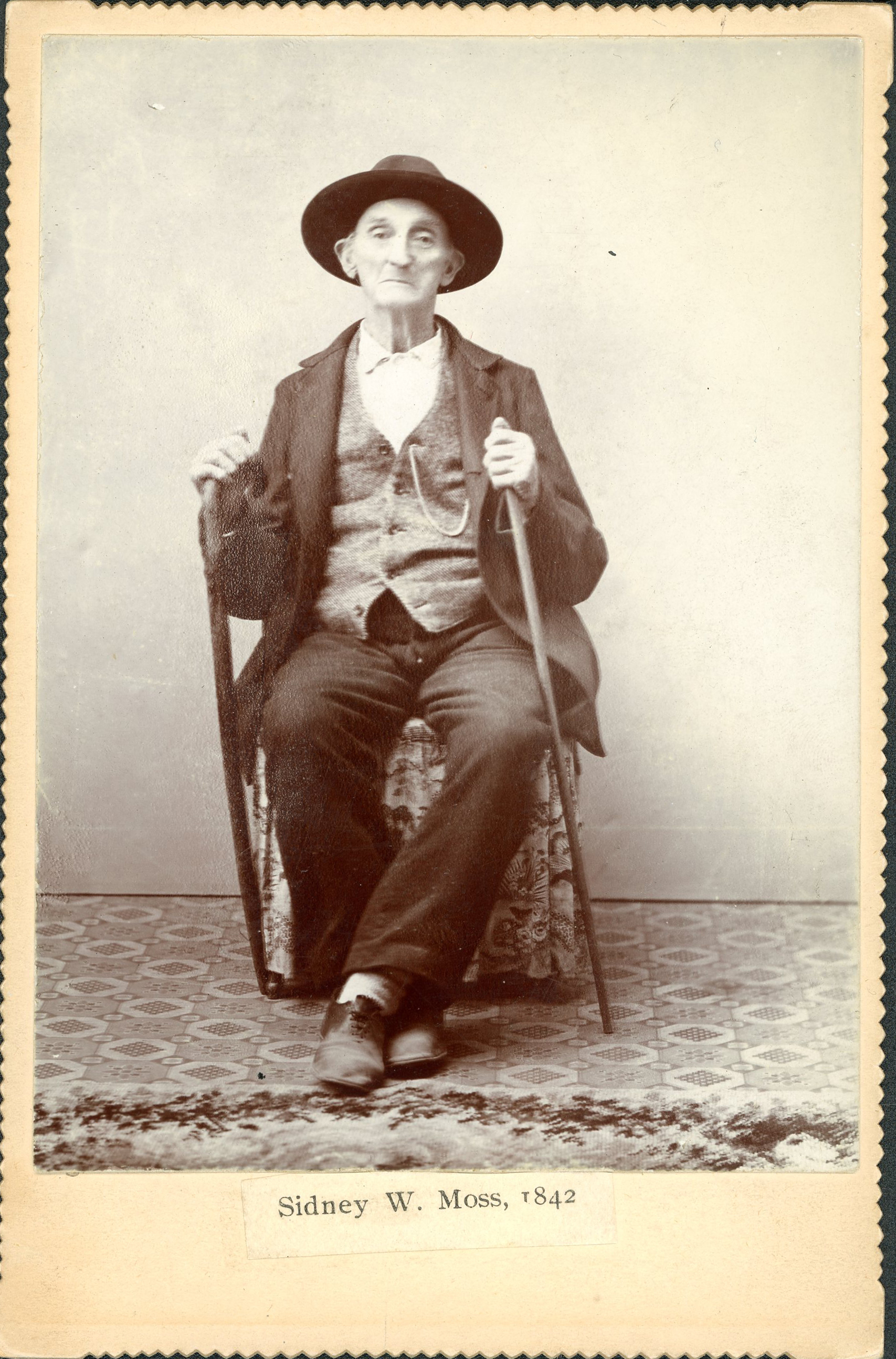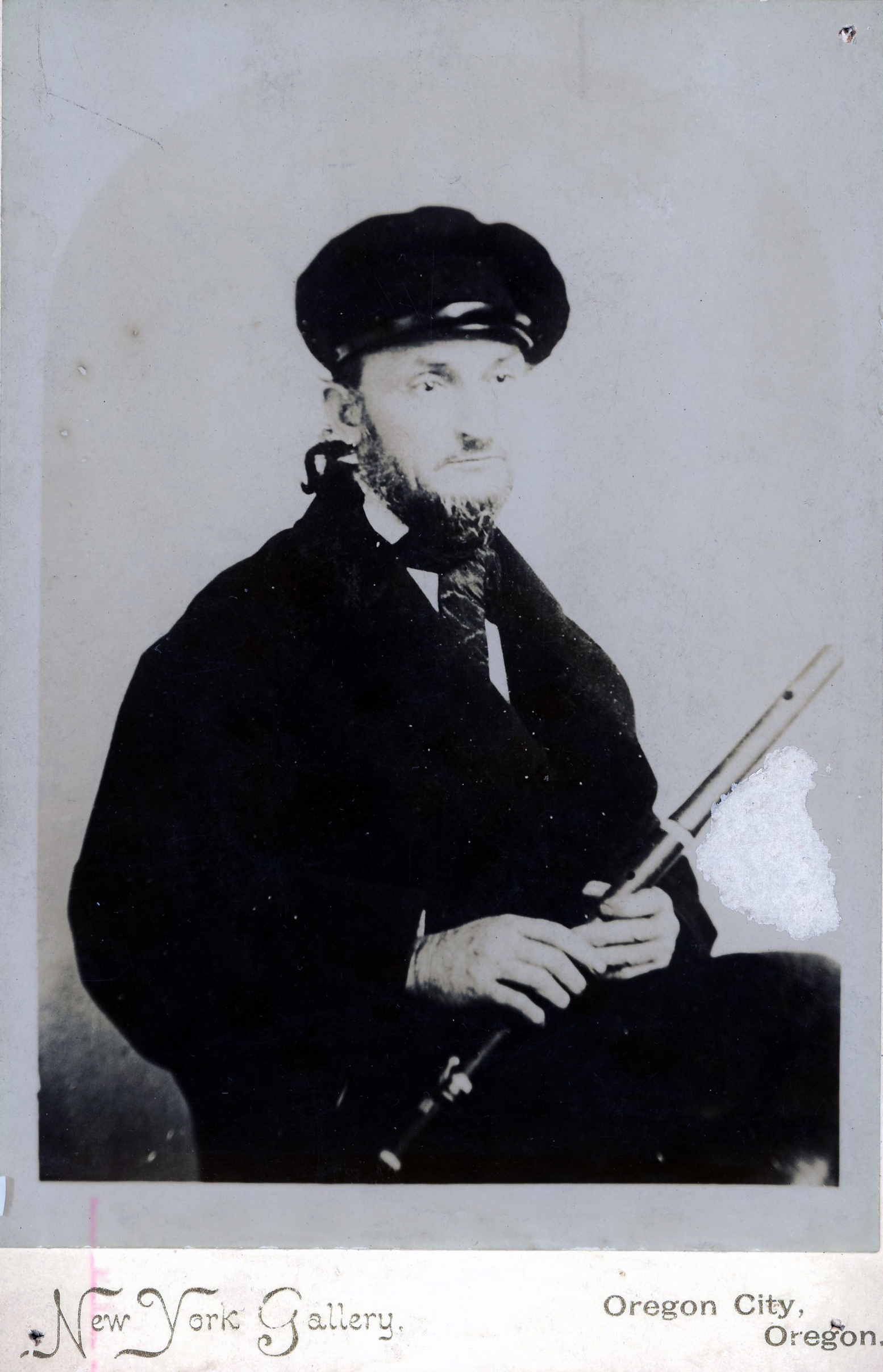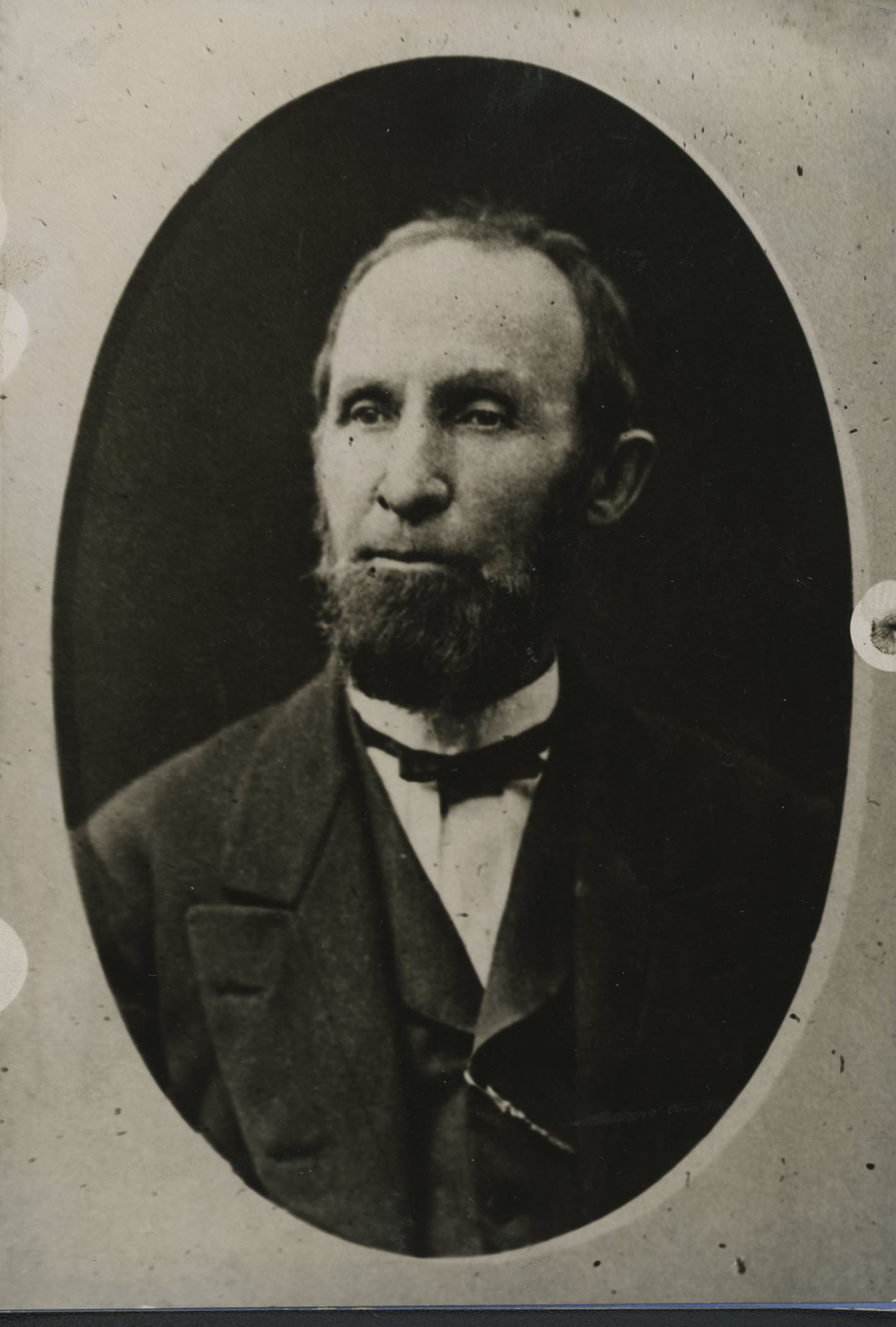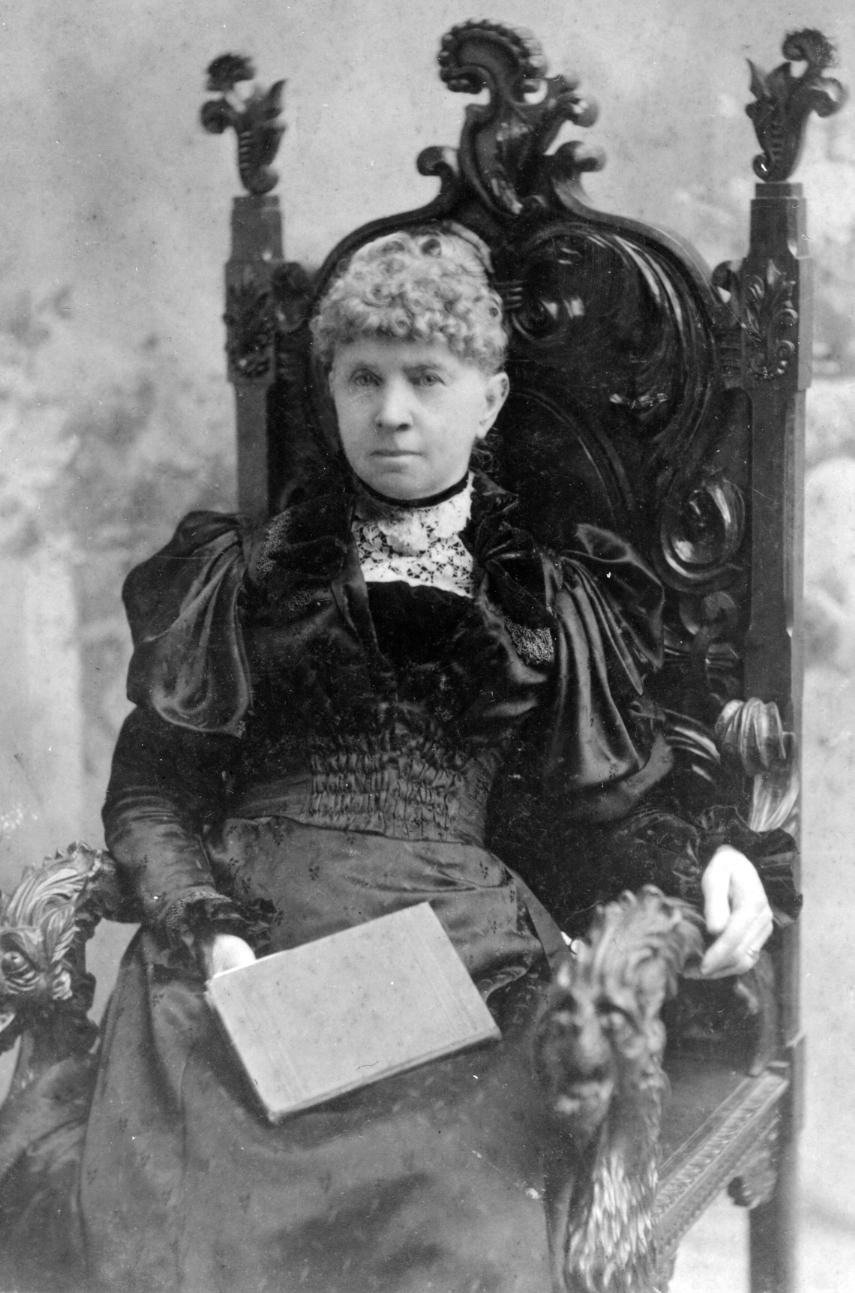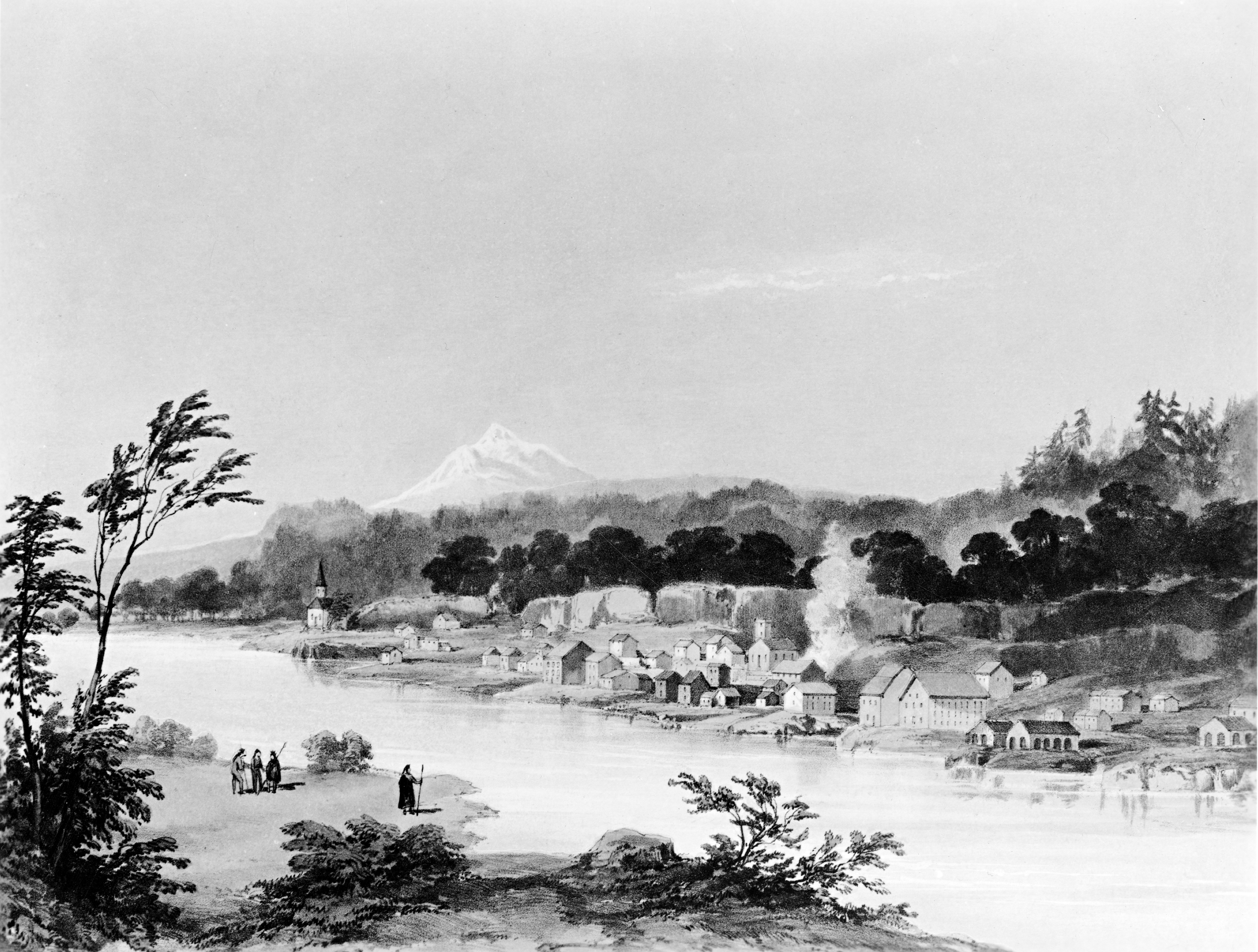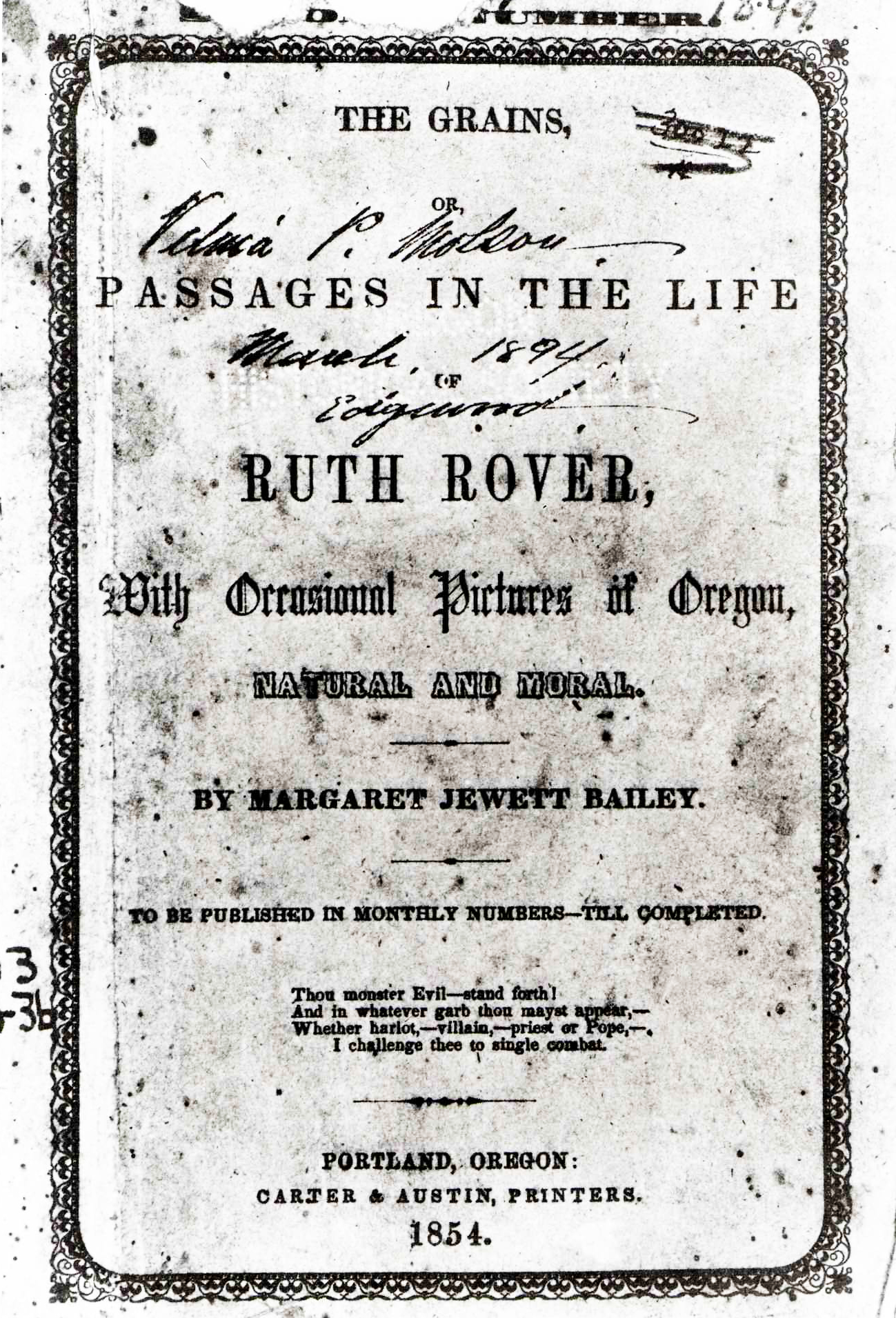Sidney Walter Moss was a well-known early Oregon resident who was active in business and politics. He gained considerable notoriety in the longest mystery in Oregon's literary history. For more than a century and a half, scholars have argued whether Moss was the author of the first novel about Oregon, a question that remains an unresolved enigma.
Born in Paris, Kentucky, on March 17, 1810, Moss traveled to several states before emigrating to Oregon in 1842 with the overland wagon train led by Elijah White. Energetic and ambitious, he launched a never-stop career as an entrepreneur. He built one of the first hotels in Oregon City, reportedly surveyed the town for John McLoughlin, and threw himself into other businesses, including a general store, a ferryboat operation, a livery stable, and a jail. He also served as a tax assessor and as clerk of the circuit court and organized a debating society. His contemporaries saw him as especially opinionated in his political and religious views. Interested in agricultural endeavors, he bought thousands of acres of land and attempted to organize farmers in the Oregon City area. In all of these activities, Moss expressed his faith in Oregon as a developing region.
In addition to his strong opinions about Oregon politics, Moss claimed to be an author. Sometime after 1850, he bragged of writing The Prairie Flower, a novel about overlanders making their way to Oregon. When the novel was published in 1849, Emerson Bennett was listed as the author, but Moss asserted that he was the author and charged Bennett with stealing his work. These counterclaims would continue for decades, and through the years most Oregonians supported Moss's claim of authorship. Historian Hubert Howe Bancroft and writer Frances Fuller Victor backed Moss, as did Moss's daughter in letters published in the Oregonian. Others claimed Bennett wrote the novel.
Overton Johnson, coauthor of Route across the Rocky Mountains (1846), delivered Moss's manuscript to Emerson Bennett to be published. As an author and editor, Bennett greatly revised and published the work as The Prairie Flower. Bennett spoke vaguely of an earlier manuscript given to him, but he was not explicit about it; and Moss, although admitting the published novel differed greatly from his original work, was not clear about what he had written and what the changes were. If correct, this surmise indicates that both Bennett and Moss wanted credit for the novel but were unwilling to be specific about which parts were theirs and which belonged to another. Despite the uncertainty, The Prairie Flower remains the first published novel written about Oregon.
Moss lived most of his life in Oregon City. He married twice, fathered several children, and continued to be active well into his eighties. He published a few newspaper articles but no other book. Moss died in 1901, at the age of ninety.
-
![The date 1842 indicates the year he immigrated to Oregon, not his age.]()
Sidney W. Moss.
The date 1842 indicates the year he immigrated to Oregon, not his age. Oregon Historical Society Research Library, photo file 772
-
![The date 1842 indicates the year he immigrated to Oregon.]()
Sidney W. Moss, 1898.
The date 1842 indicates the year he immigrated to Oregon. Oregon Historical Society Research Library, photo file 772
-
![]()
Sidney W. Moss, c.1840s.
Oregon Historical Society Research Library, photo file 772
Related Entries
-
![Elijah White (1806-1879)]()
Elijah White (1806-1879)
Among early migrants to the Oregon Country from the United States, Elij…
-
![Frances Fuller Victor (1826–1902)]()
Frances Fuller Victor (1826–1902)
In 1869, the Overland Monthly and Out West Magazine featured "Manifest …
-
![Oregon City]()
Oregon City
Oregon City was the first incorporated city west of the Rocky Mountains…
-
![Oregon Literature (1814-1920)]()
Oregon Literature (1814-1920)
The first literature of Oregon followed patterns typical of most other …
Map This on the Oregon History WayFinder
The Oregon History Wayfinder is an interactive map that identifies significant places, people, and events in Oregon history.
Further Reading
Mills, Randall V. "Emerson Bennett's Two Oregon Novels." Oregon Historical Quarterly 41 (December 1940): 367-81.
Nelson, Herbert B. The Literary Impulse in Pioneer Oregon. Corvallis: College Press of Oregon State College, 1948, 44-51.
Powers, Alfred. History of Oregon Literature. Portland, Ore.: Metropolitan Press, 1935, 195-204.

